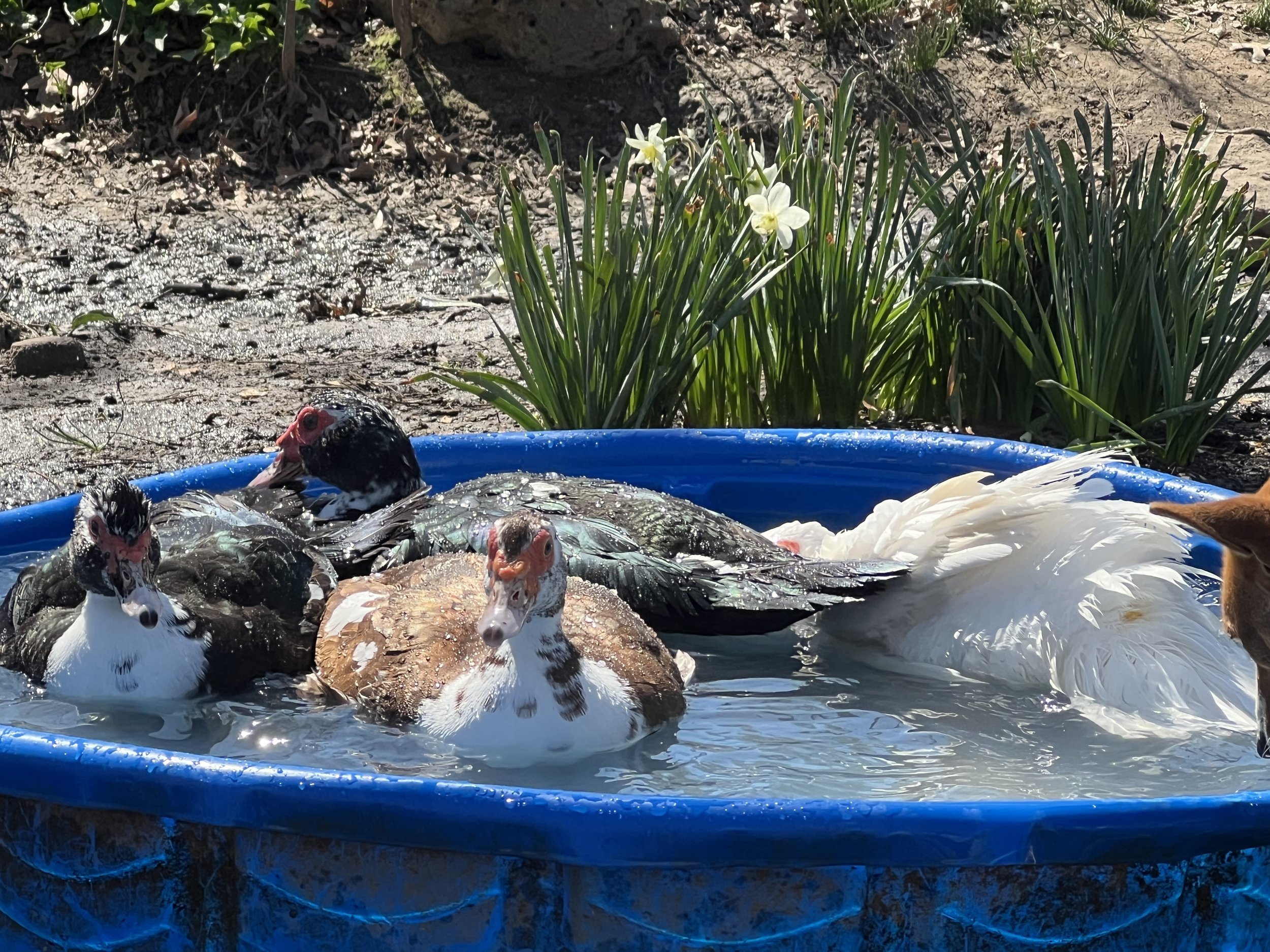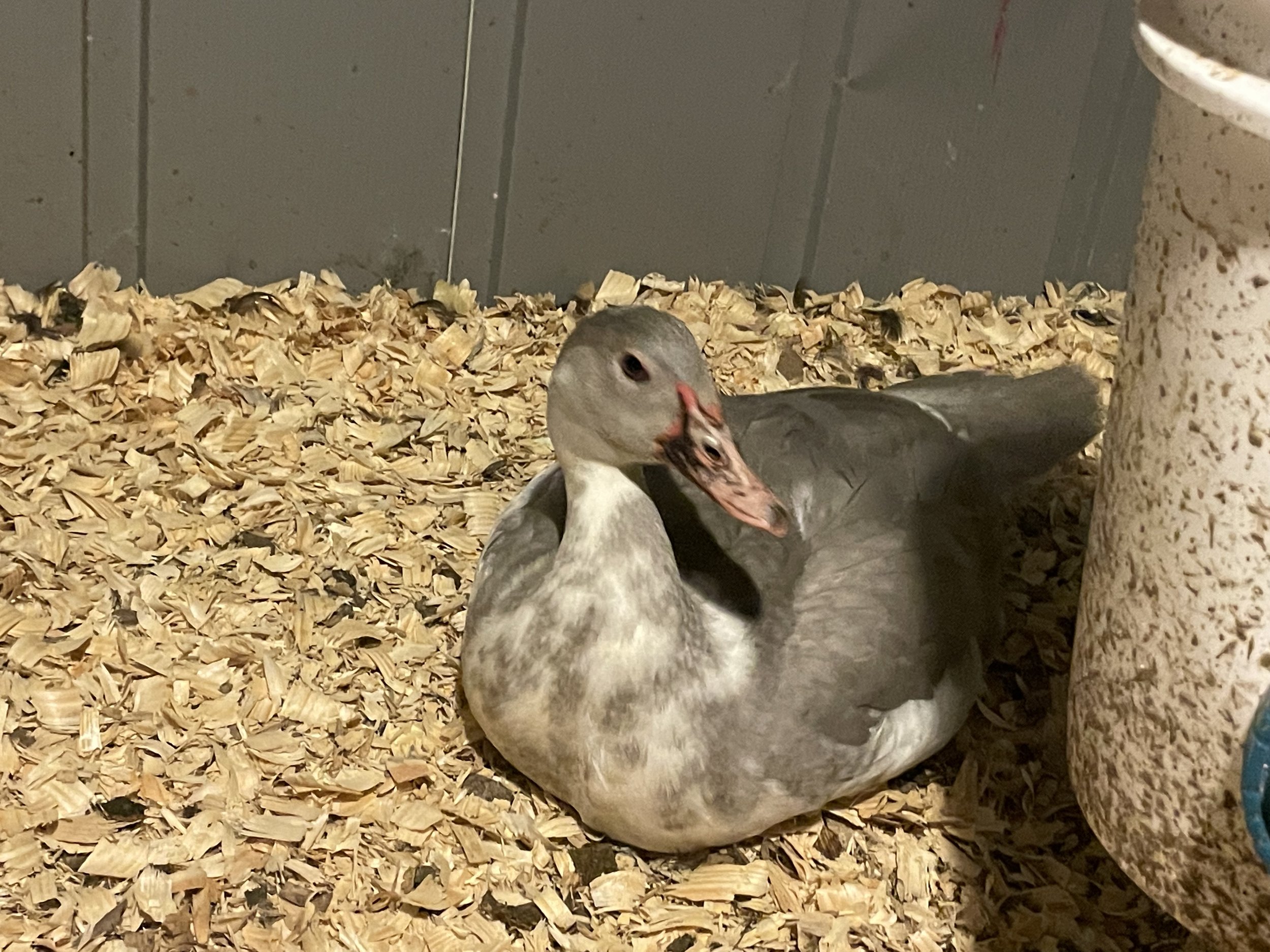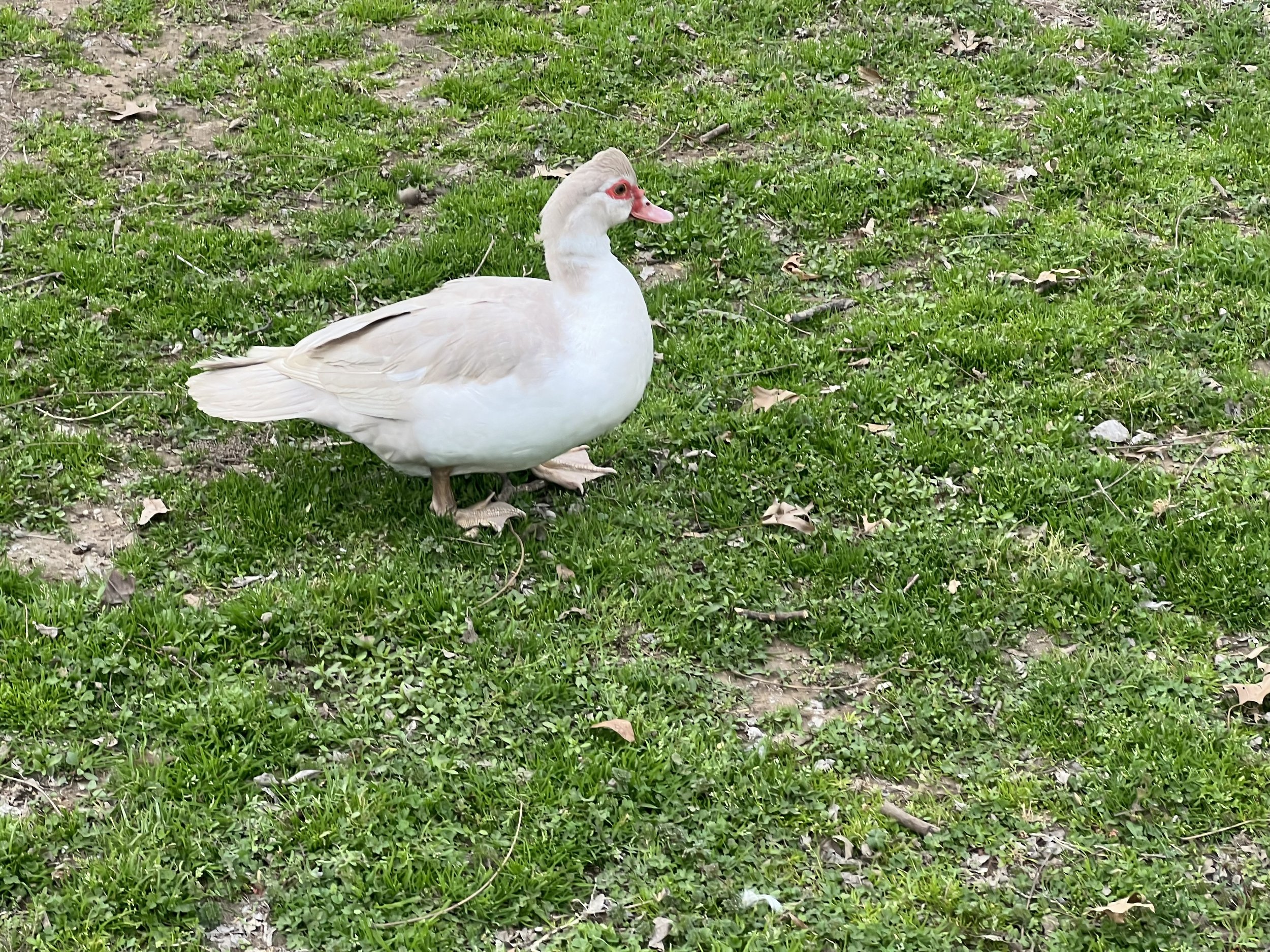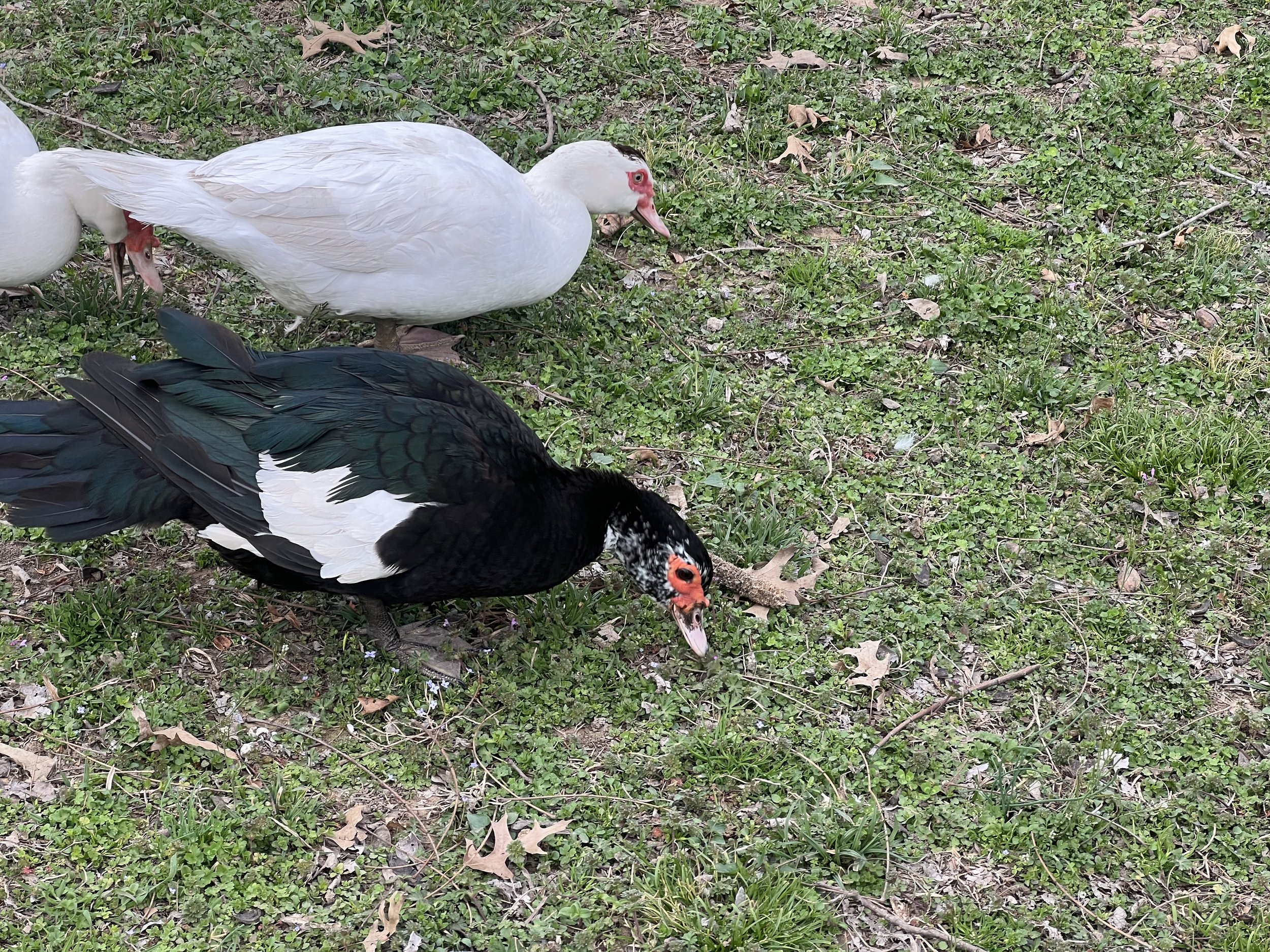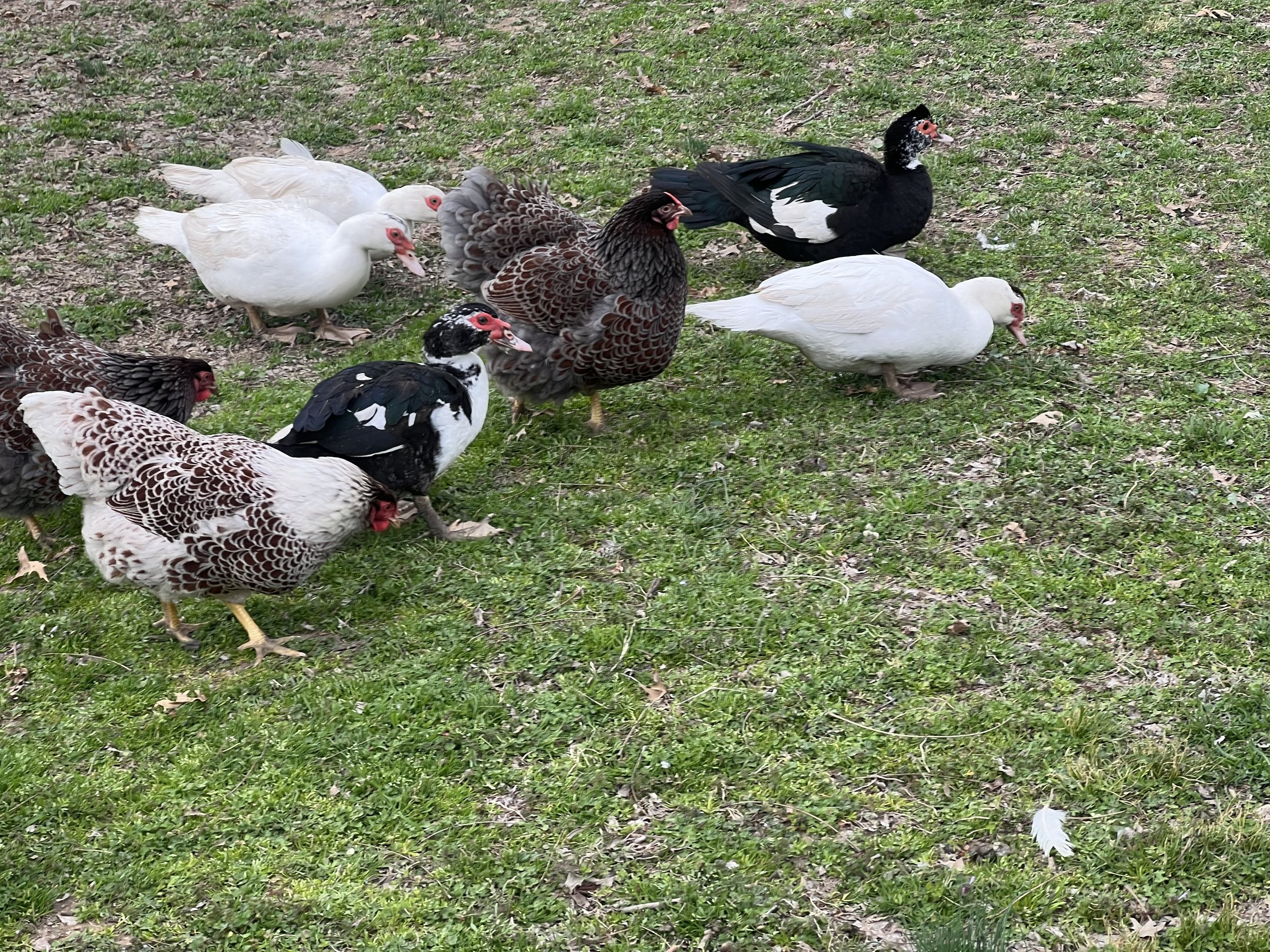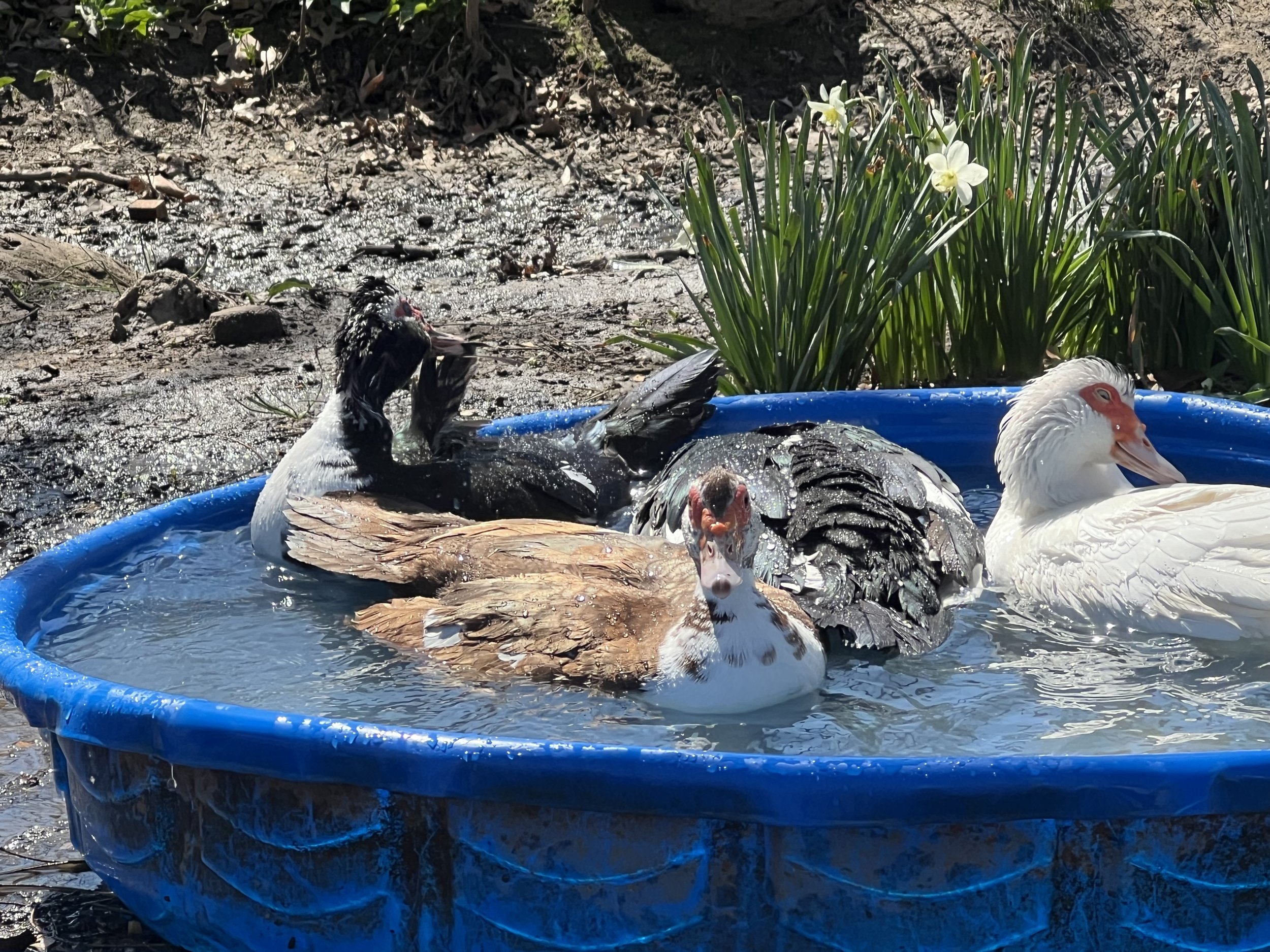Appearance: The most common color for muscovy ducks is black. Ducklings have a dark head, body, and feet that will all continue darkening as they mature. Besides black, muscovy ducks are found in a variety of colors. From blue to lavender to chocolate, you can find pretty much any shade of duck you want!
Origin: Muscovy ducks are native to South America, Central America, Mexico, and parts of southern Texas. They are the only domestic ducks that are not descendants of the mallard.
Rarity: Muscovy ducks are a common breed that can most easily be found by local breeders due to low tolerance to shipping.
Size: Weighing up to 15 pounds, male muscovy ducks are the largest species of ducks in the world, with female muscovy ducks being roughly half the weight of the males.
Temperament: Muscovy ducks tend to be shy and more independent than other species of ducks,but the temperament depends a lot on the individual duck. Like any animal, Muscovy ducks each have their own personality, and you can’t make a generalization about all Muscovy ducks based on one. If you are hoping for a particularly tame and docile duck, make sure you get it as a duckling or hatch the duckling from an egg. Introducing your ducklings to humans and socialization at a young age is essential to keep them docile and friendly.
Uses: Muscovy ducks are used for a variety of uses across the world. From commercial use to backyard pets, these ducks make great additions to your property.
Breeding: Muscovy ducks typically have a breeding season that extends from late summer (August) to early spring (May), allowing for multiple broods (2-3 times a year).
